say I have two sets of shape files that cover the same region and often, but not always share borders, e.g. US counties and PUMAs. I'd like to define a new scale of polygon that uses both PUMAs and counties as atomic building blocks, i.e. neither can ever be split, but I'd still like as many units as possible. Here is a toy example:
library(sp)
# make fake data
# 1) counties:
Cty <- SpatialPolygons(list(
Polygons(list(Polygon(cbind(x=c(0,2,2,1,0,0),y=c(0,0,2,2,1,0)), hole=FALSE)),"county1"),
Polygons(list(Polygon(cbind(x=c(2,4,4,3,3,2,2),y=c(0,0,2,2,1,1,0)),hole=FALSE)),"county2"),
Polygons(list(Polygon(cbind(x=c(4,5,5,4,4),y=c(0,0,3,2,0)),hole=FALSE)),"county3"),
Polygons(list(Polygon(cbind(x=c(0,1,2,2,0,0),y=c(1,2,2,3,3,1)),hole=FALSE)),"county4"),
Polygons(list(Polygon(cbind(x=c(2,3,3,4,4,3,3,2,2),y=c(1,1,2,2,3,3,4,4,1)),hole=FALSE)),"county5"),
Polygons(list(Polygon(cbind(x=c(0,2,2,1,0,0),y=c(3,3,4,5,5,3)),hole=FALSE)),"county6"),
Polygons(list(Polygon(cbind(x=c(1,2,3,4,1),y=c(5,4,4,5,5)),hole=FALSE)),"county7"),
Polygons(list(Polygon(cbind(x=c(3,4,4,5,5,4,3,3),y=c(3,3,2,3,5,5,4,3)),hole=FALSE)),"county8")
))
counties <- SpatialPolygonsDataFrame(Cty, data = data.frame(ID=paste0("county",1:8),
row.names=paste0("county",1:8),
stringsAsFactors=FALSE)
)
# 2) PUMAs:
Pum <- SpatialPolygons(list(
Polygons(list(Polygon(cbind(x=c(0,4,4,3,3,2,2,1,0,0),y=c(0,0,2,2,1,1,2,2,1,0)), hole=FALSE)),"puma1"),
Polygons(list(Polygon(cbind(x=c(4,5,5,4,3,3,4,4),y=c(0,0,5,5,4,3,3,0)),hole=FALSE)),"puma2"),
Polygons(list(Polygon(cbind(x=c(0,1,2,2,3,3,2,0,0),y=c(1,2,2,1,1,2,3,3,1)),hole=FALSE)),"puma3"),
Polygons(list(Polygon(cbind(x=c(2,3,4,4,3,3,2,2),y=c(3,2,2,3,3,4,4,3)),hole=FALSE)),"puma4"),
Polygons(list(Polygon(cbind(x=c(0,1,1,3,4,0,0),y=c(3,3,4,4,5,5,3)),hole=FALSE)),"puma5"),
Polygons(list(Polygon(cbind(x=c(1,2,2,1,1),y=c(3,3,4,4,3)),hole=FALSE)),"puma6")
))
Pumas <- SpatialPolygonsDataFrame(Pum, data = data.frame(ID=paste0("puma",1:6),
row.names=paste0("puma",1:6),
stringsAsFactors=FALSE)
)
# desired result:
Cclust <- SpatialPolygons(list(
Polygons(list(Polygon(cbind(x=c(0,4,4,3,3,2,2,1,0,0),y=c(0,0,2,2,1,1,2,2,1,0)), hole=FALSE)),"ctyclust1"),
Polygons(list(Polygon(cbind(x=c(4,5,5,4,3,3,4,4),y=c(0,0,5,5,4,3,3,0)),hole=FALSE)),"ctyclust2"),
Polygons(list(Polygon(cbind(x=c(0,1,2,2,3,3,4,4,3,3,2,2,0,0),y=c(1,2,2,1,1,2,2,3,3,4,4,3,3,1)),hole=FALSE)),"ctyclust3"),
Polygons(list(Polygon(cbind(x=c(0,2,2,3,4,0,0),y=c(3,3,4,4,5,5,3)),hole=FALSE)),"ctyclust4")
))
CtyClusters <- SpatialPolygonsDataFrame(Cclust, data = data.frame(ID = paste0("ctyclust", 1:4),
row.names = paste0("ctyclust", 1:4),
stringsAsFactors=FALSE)
)
# take a look
par(mfrow = c(1, 2))
plot(counties, border = gray(.3), lwd = 4)
plot(Pumas, add = TRUE, border = "#EEBB00", lty = 2, lwd = 2)
legend(-.5, -.3, lty = c(1, 2), lwd = c(4, 2), col = c(gray(.3), "#EEBB00"),
legend = c("county line", "puma line"), xpd = TRUE, bty = "n")
text(coordinates(counties), counties@data$ID,col = gray(.3))
text(coordinates(Pumas), Pumas@data$ID, col = "#EEBB00",cex=1.5)
title("building blocks")
#desired result:
plot(CtyClusters)
title("desired result")
text(-.5, -.5, "maximum units possible,\nwithout breaking either PUMAs or counties",
xpd = TRUE, pos = 4)
 I've naively tried many of the g* functions in the rgeos package to achieve this and have not made headway. Does anyone know of a nice function or awesome trick for this task? Thank you!
I've naively tried many of the g* functions in the rgeos package to achieve this and have not made headway. Does anyone know of a nice function or awesome trick for this task? Thank you!
[I'm also open to suggestions on a better title]

